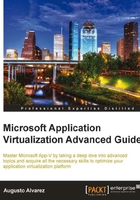
Chapter 2. Sequencing in Complex Environments
All of us working in the IT sector know that technology, platforms, infrastructure, and implementations do not always work as we would find in a step-by-step article. We know that every scenario that we could work in may require some tweaks to adjust our implementation.
App-V is one of the greatest examples of how a technology can adapt to almost any given scenario: integrating with other existing platforms, different implementation models, and the variety in the delivery methods.
If we are talking about the sequencing compatibility of applications, we are quite sure that almost any application is suitable for packaging, but sequencing complex applications could require several hours of analyzing, installing, packaging, and testing the virtual environment, to finally get it ready.
There are several parameters and options we can use in the sequencing process in order to complete an application virtualization, such as, editing the Exclusion Items used by default in the App-V Sequencer, handling drivers outside the virtual environment, working with the LOCAL_INTERACTION_ALLOWED policy for the application to interact with the operating system, and so on.
One important option about the complex applications scenario is the package accelerators , which is included in the App-V 4.6 SP1. With the package accelerators, we generate a new way of automating and simplifying the sequencing phase of an application. Once a complex application is captured, we can generate the necessary environment and guidelines within this package accelerator and share it with the community.
In this chapter, you will learn about:
- An overview of complex sequencing: applications not supported and sequencing best practices
- Complex scenarios in the sequencing phases: reviewing which applications could require more tuning than others
- Handling the virtual environment: the override and merge options, and local interaction policy
- Understanding and using Dynamic Suite Composition (DSC)
- Upgrading and editing an existing package with the new features of App-V 4.6 SP1
- Reviewing package accelerators